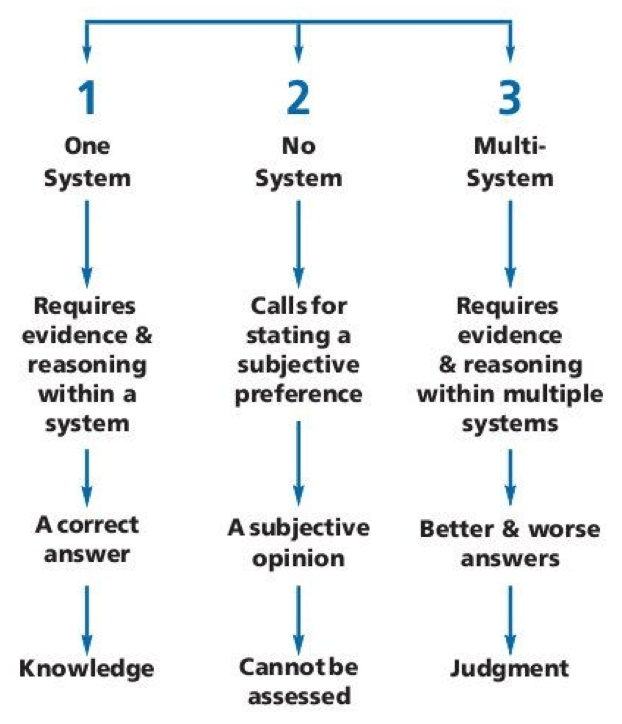I recently attended a presentation entitled “Hitting the mark creating questions that generate critical thinking discussion” given by Drs. Barbara Fennema and Lou Anne Manning. Their presentation was based off of the Elder and Paul Critical thinking framework but it referenced a resource that I had not previously been aware of: The Miniature Guide to The Art of Asking Essential Questions” (http://www.amazon.com/Miniature-Asking-Essential-Questions-ebook/dp/B0062QCP5O). I believe that this reference is an easy and essential read for those of us developing discussion questions! The most exciting thing I got from this book was the Systems classification of Questions. This methodology for the classification of questions is quite powerful as it allows us to easily rank them as to each questions relative effectiveness as discussion questions for class!
The three types of questions were defined by Elder and Paul as:
-
One System questions: These are questions that have a discrete answer. While they may require reasoning and evidence it is only from within one system and they can be answered by a factual knowledge answer. e.g. sum, what is the size of x, what is the population of the US? One System questions in general are poor discussion questions as the discrete answer does not allow for multiple voices to enter the conversation without redundancy.
-
No System questions: No system questions are those that cannot by nature have a discrete answer as they ask us to state and opinion or preference. e.g. are pancakes better than waffles? who do you think should win the next election? No System questions form fair discussion question because it allows multiple voices to enter the conversation. However, you cannot argue against one persons’ preference so there may also be an element of personal subjectivity that makes these questions hard to assess.
-
Multi-system (sometimes called Conflicting System) questions: Multi-system questions require reasoning and evidence based evaluation of options across more than one system. While these questions may have “better” or “worse” answers (due to the levels or reasoning and evidence used to support the answer), they do not have a discrete answers. Many voices can contribute to the conversation and interact with each other as an answer is sought. Multi-system questions are good discussion questions as they ask students to reason and engage in civil discourse around a topic.
So all this taken together, the more systems you have in a question the better it is for discussion. So how can you easily rank your questions? Fennema and Manning presented the following checklist (with a few modifications)
Checklist for effective discussion questions
Criteria |
Yes |
No |
Maybe/Unclear |
| This question cannot be answered with a fact, definition, or both | |||
| This questions cannot be answered by stating an opinion or subjective preference | |||
| This question has more than one possible answer | |||
| This question requires evidence and/or reasoning to answer | |||
| This question allows for multiple perspectives to be considered |
You can use this table to evaluate each of your discussion questions. The larger the number of Yes’ you select the better your question is for generating discussion. A quick word of warning, if you select unclear for any of your questions you may wish to rethink the wording of that question; if you are unclear the students will be as well!
I hope you find as much use out of this as I did, let us know by leaving a comment below!
